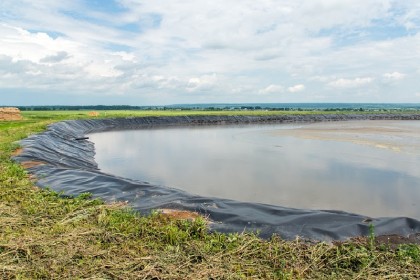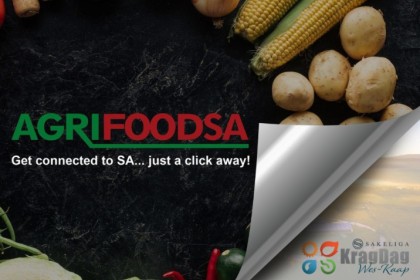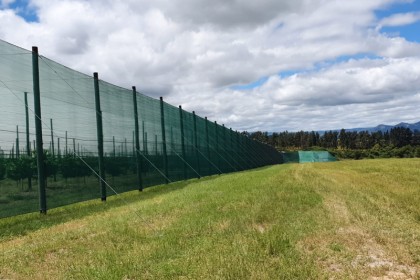
The Year That Was For Agriculture And What To Expect In 2024
The year 2023 has been a tricky one that has needed to be carefully navigated. In many ways it has been a year of consolidation and recovery, particularly for exports. And while there has been some easing of input costs, many challenges and elevated risk in the sector remain.
On the plus side, the Agbiz/IDC Agribusiness Confidence Index rebounded by 6 points to reach 50 points in the 3rd quarter, after having remained below the 50-point mark for 3 consecutive quarters. This suggests that agribusinesses are gradually adapting to long-standing challenges affecting business conditions such as deteriorating infrastructure, failing municipalities, intensified geopolitical tensions, and persistent load-shedding.
2023 was a mixed bag of blessings and challenges
Various sectors such as wheat, soybeans and maize – which are on track to produce the second-largest harvest on record – have continued to yield excellent harvests, but we are seeing the impact of downward pressure on commodity prices. South Africa’s agricultural export earnings are expected to soften this year from the 2022 record of US$12,8 billion, which was driven by a strong agricultural season and higher global prices. Commodity prices have on average declined by roughly 11% this year, while stringent regulations relating to citrus black spot disease in the European Union market and ongoing restrictions on exports of some livestock products due to foot-and-mouth disease are likely to lower export earnings.
Livestock diseases remain a concern, particularly the recent avian influenza outbreak, which has had far-reaching consequences affecting producer and consumer. A report released by a government-appointed task team in May warned that South Africa's veterinary and animal disease controls are ‘broken’ and in a state of crisis, which threatens the viability of the country's livestock industry. Some of the main problems flagged in the report are poor maintenance of laboratory infrastructure, equipment and research facilities; a lack of control over the movement of animals from infected areas; non-availability of vaccines for notifiable diseases; poor and unscientific decision-making by officials; bad coordination between national and provincial governments; and a slow response to emergency situations. Unfortunately, there appears to be no dedicated plan to deal with the crisis, and so far no effort has been made to implement the recommended corrective actions.
What’s in store for 2024
Unfortunately, many of the ‘usual’ challenges of doing business in South Africa will remain in 2024. Uncertainty around the intensity of load-shedding persists but many agribusinesses have taken matters into their own hands and are producing their own power. Underlying infrastructure issues – with roads on the brink of collapse and rail and port systems being among the least efficient in the world – are unlikely to be addressed as uncertainty and paralysis in an election year will mean limited progress.
Pressure around household food security is likely to continue into 2024, and any food price increases will add immense pressure to already stretched household budgets. It is a delicate balance to maintain a healthy and sustainable food sector amid rising production costs and biosecurity issues while ensuring access and affordability of food for all. Of course, this is not something that can be solved by agriculture alone – it requires a robust economy that offers greater employment and growth opportunities.
Another factor that is unlikely to improve next year is the export environment, which we expect to remain challenging for various reasons. We have commented extensively on our potential exclusion from the United States African Growth and Opportunity Act trade pact and the negative impact this would have on the agricultural sector, while regulations in the EU continue to mount. In addition, geopolitical tensions are expected to continue into 2024, with the Russia–Ukraine and Israel–Palestine conflicts showing little sign of resolution as the year draws to a close. It is our view, then, that attention must be urgently focused on improving logistics efficiency, intensifying the promotion of South African products in export markets, and sustaining solid relations with existing critical export markets while securing expansion into new markets.
Fortunately, El Niño is expected to have less of an impact than initially feared on agricultural conditions in terms of rainfall due to improved soil moisture from past rainy seasons. However, the South African Weather Service forecasts above-normal minimum and maximum temperatures for summer. This forecast comes amid warnings from the World Meteorological Organization that globally El Niño, along with climate change, would usher in record-breaking temperatures in the next 5 years. This has already been experienced as heat waves struck the northern hemisphere this year. This does not auger well for crops and livestock, while water loss through evaporation and increased wildfires are additional threats.
The year 2024 is being hailed as a defining moment for South Africa and it is bound to have its highlights and obstacles. Agriculture has been a highlight since Covid-19 and, despite all the challenges we face, there are encouraging signs that it will continue. However, it is important to view the immense opportunities in the sector through the lens of the reality of doing business in South Africa. It is not easy but there is always hope, and the challenges we have faced as an industry and as a country have made us more resilient. Through it all, we believe the private sector will continue to forge the way ahead – with or without government.












